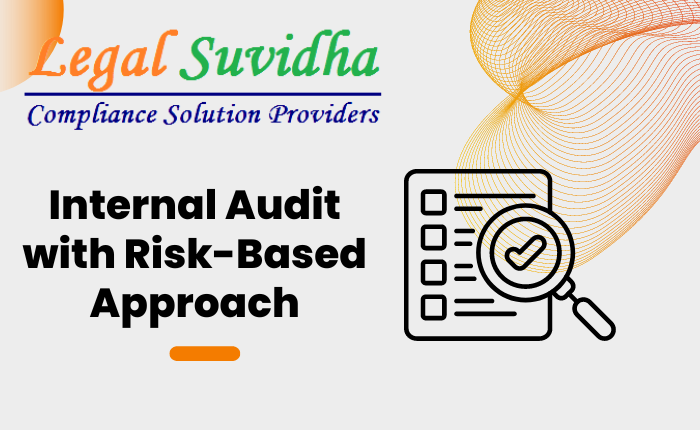Risk-centered internal audit represents a strategic methodology employed by internal audit functions to concentrate their efforts on the most critical risk areas within an organization. This sophisticated approach stems from the acknowledgment that resources are finite and should be channeled toward those areas where the potential influence on an organization’s objectives is most substantial. Delving into the framework of risk-centered internal audit, the following overview unfolds:
1. Risk Identification: The foundational phase of the risk-centered internal audit process involves the meticulous identification and evaluation of potential risks that could impede an organization’s goal attainment. These risks encompass a spectrum spanning financial considerations, operational processes, reputational concerns, regulatory compliance, information technology, and more.
2. Prioritization and Risk Grading: Following risk identification, a typical practice involves grading or ranking risks based on pertinent factors such as their anticipated impact and recurrence. Categorizations ranging from low, medium, to high-risk levels are determined, taking into account their potential ramifications on various facets of the organization. This classification guides internal auditors in discerning where their focal point should be.
3. Audit Strategy Formulation: With risks categorized, the internal audit team devises a comprehensive audit strategy outlining the sequence and focus areas of audit endeavors. This strategy mirrors the relative urgency and importance of addressing specific risks.
4. Definition of Scope and Objectives: For each distinct audit undertaking, internal auditors meticulously outline the scope and objectives. The scope meticulously delineates the specific processes, functions, or activities subject to review, while the objectives articulate the aspirations of the audit. Ensuring precision within the agreed audit scope remains imperative.
5. Design and Execution of Audit Procedures: The internal audit team crafts and implements meticulous audit procedures, meticulously tailored to the identified risks and audit objectives. These procedures encompass an array of activities such as control testing, Internal Financial Controls (IFC) assessment, testing of data, testing of evidence, examination of documents, and interactions with personnel.
6. Assessment and Evaluation: During an audit, internal auditors carefully check how well the planned safeguards and ways of doing things are working. They gather and closely examine evidence to see if these methods are effectively managing the known risks.
7. Findings and Offering Recommendations: Audit findings encompass observations by auditors, primarily instances of deviations from established controls or optimal practices, which could escalate risks. Derived from these findings, internal auditors propose potential business implications along with recommendations to bolster controls and alleviate risks.
8. Formalized Reporting: The outcomes of the audit, inclusive of findings and recommendations, are channeled through a formalized audit report. This comprehensive document is commonly shared with upper-level management, the board of directors, and occasionally external stakeholders such as regulators, once finalization is attained.
9. Post-Audit Monitoring: After the issuance of the audit report, internal auditors oversee the progress of the management’s execution of suggested actions aimed at addressing the pinpointed inadequacies.
10. Consultative Role: Beyond control assessment, the risk-centered internal audit paradigm can extend advisory services, aiding management in augmenting their risk management and control frameworks through practical business recommendations.
11. Synchronization with Strategic Goals: The risk-centered approach ensures that internal audit initiatives harmonize with the strategic ambitions of the organization, contributing to informed decision-making and the facilitation of value generation.
12. Adaptability: The methodology empowers internal auditors to nimbly tailor their endeavors to accommodate shifts in the organization’s risk landscape, regulatory milieu, and business ecosystem.
13. Oversight and Governance: Often, the audit committee of the board of directors assumes the role of overseeing and providing guidance for the risk-centered internal audit process.
In conclusion, Risk-centered internal auditing goes beyond just a method. It represents a big change in how we think. Instead of looking everywhere, we focus on important areas and give advice as well as feedback. This helps companies not only handle risks better but also create a space where they can grow and come up with new ideas.
If You have any queries then connect with us at [email protected] or [email protected] & Contact us & stay updated with our latest blogs & articles


![Received an Income Tax Notice in India? Don’t Panic — Here’s Exactly What to Do [2025 Guide] 1 Income Tax Notice](https://legalsuvidha.com/wp-content/uploads/2025/12/Income-Tax-Notice.png)
![Cyber Crime FIR in India: How to File Complaint for Online Fraud, Banking Fraud & Digital Harassment [2025 Guide] 2 Cyber Crime Complaint](https://legalsuvidha.com/wp-content/uploads/2025/12/Cyber-Crime-Complaint.png)
![Trademark Infringement in India: How to File Legal Action & Protect Your Brand [2025 Guide] 3 Tradenark Infrigement](https://legalsuvidha.com/wp-content/uploads/2025/12/Tradenark-Infrigement.png)
![Property Title Verification in India: How to Check Clear Title in 7 Steps [Avoid Property Fraud – 2025 Guide] 4 Property Titles Verification](https://legalsuvidha.com/wp-content/uploads/2025/12/Property-Titles-Verification.png)



